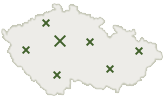In May 2015, the EMCDDA and Europol examined the available information on a new psychoactive substance 1-phenyl-2-(1-pyrrolidinyl)-1-pentanone, commonly known as α-pyrrolidinovalerophenone (α-PVP), through a joint assessment. The two organisations concluded that sufficient information had been accumulated to merit the production of a Joint Report on α-PVP as stipulated by Article 5.1 of the Council Decision.
Read more
This publication is an update of Prevention of substance abuse, published in 2007. Like the previous analysis, it is a translation of a German study that presents a state-of-the-art review of prevention science. Although originally targeted at the German audience, the evidence base addressed is global in its scope. The review is broad in its considerations, covering not only the main topic of drug abuse but also alcohol and tobacco, as well as behavioural addictions, such as gambling.
Read more
The EMCDDA is commemorating 20 years of monitoring and communicating evidence on drugs with a technical conference being held in Lisbon from 21–22 September.
Read more
In 2015, the EMCDDA commemorates 20 years of monitoring the drugs problem in Europe. This brochure provides a summary of the agency’s key achievements over the period, along with a timeline showing a selection of major events, presented per year.
Read more
Alexis Goosdeel (Belgium) was selected today to become the new Director of the Lisbon-based European Monitoring Centre for Drugs and Drug Addiction (EMCDDA). Following a public recruitment procedure, the agency’s Management Board, meeting in Lisbon this week, interviewed three candidates short-listed for the post in July by the European Commission. Mr Goosdeel was elected by over a two-thirds majority by secret ballot.
Read more
This year, the EMCDDA commemorates 20 years of monitoring the drugs problem in Europe. Over the last two decades, much has changed in the extent and nature of the phenomenon. In 1995, when the agency embarked on its mission, the EU was in the midst of a heroin epidemic, with drug policy largely driven by HIV transmission and AIDS-related and overdose deaths. In 2015, the policy drivers have diversified and the complexity of the drugs problem has increased, with many of the substances monitored today virtually unknown when the agency was first established.
Read more



